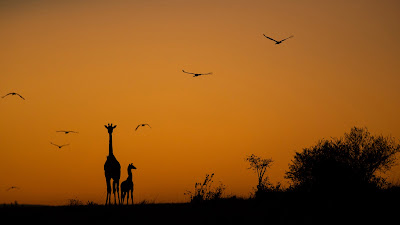Gone are the days when photos were only sold by stock agencies or displayed only in Exhibition halls. Today, publications will contact you directly if they see and like your work. So my advice would be, do good, path-breaking work and then market it.
1. Tell us more about your background and journey.
I started out wanting to have a horse in my home. Now, that’s ok for someone who has a farmhouse or lives in a bungalow but for someone staying in a 1BHK flat in Mumbai, it was a slightly unusual dream. Well that was around 30 years back and I still don’t own a horse but the roots of my love towards wildlife were sown back then.
I was always fascinated with animals and had dreamt of seeing a cheetah ever since I was in the 2nd standard I guess. My growing up on Jim Corbett books helped as well. Forests always held a charm for me and when I first got a chance to make a trip to the wild, I latched on to it. I was hooked right from the very first safari back in 2003.
It’s been 18 years since and I have enjoyed the journey thoroughly. During the past 12 years, I have led many wildlife photography tours and have had the good fortune of teaching wildlife photography to many students. Today I am a Canon EOS Maestro and take boutique tours around the world with the aim of teaching wildlife photographers about light and creativity in wildlife photography.
2. How and when did you realize your passion for photography?
I believe it was a gradual process for me. I sort of got addicted to it if I may say so.
3. What are some tips you would like to share with amateur photographers?
Stay true to yourself and do what you like. I have seen a lot of young photographers who start following a trend and then burn out or just fizzle out. I think the world of wildlife photography needs fresh thinking and courageous approaches.
Keep experimenting as much as you can in the field and be ready to face failure. In addition, I would also like to tell amateur wildlife photographers or folks that are starting it with Wildlife photography to always keep in mind that it is a privilege that the animals allow us to take their images. Never ever forget that it's their safety first. Don’t cross that line for anything.
4. What are the important skills one should have to be a successful photographer?
A successful photographer could mean multiple things, but for the sake of this answer let's restrict ourselves to the commercial angle. I believe there are two key components. First, to have a different eye. You have to stand out from amongst the 1000s of wildlife photographers around and second, you need to realize the importance of marketing and showcasing your world.
Gone are the days when photos were only sold by stock agencies or displayed only in Exhibition halls. Today, publications will contact you directly if they see and like your work. So my advice would be, do good, path-breaking work and then market it.
5. What are various opportunities available for aspiring photographers?
I will speak from a wildlife photographer's perspective. Unfortunately, I cannot give false hopes to people that there are very many opportunities as just a wildlife photographer. Yes, if you can write a little or have the flair and liking to teach then there are many opportunities to lead tours, teach wildlife photography and write about it in magazines.
6. Which is your favorite book and why?
I don’t really have one all-time favorite book as such but right now it is ‘One Life’ by Federico Veronesi. It is a brilliant collection of really thought-provoking wildlife imagery from East Africa.
Rahul Sachdev has been actively involved in wildlife photography since 2004 and has over the years built a strong portfolio that is recognized for its unique use of light and creativity. He has been conducting wildlife photography tours and workshops around the globe for over 10 years now, with the focus being to teach how to use light in wildlife photography.
Rahul believes that a photographer has to bring forth the artist within and use wildlife photography as a medium to present one's own vision of the world. His images and articles about photography have been published in many magazines and he has also won the Natures Best Photography Award in 2017 for Wildlife which is one of the most prestigious awards in the category.
Interviewed By - Daisy Sharma
















0 Comments